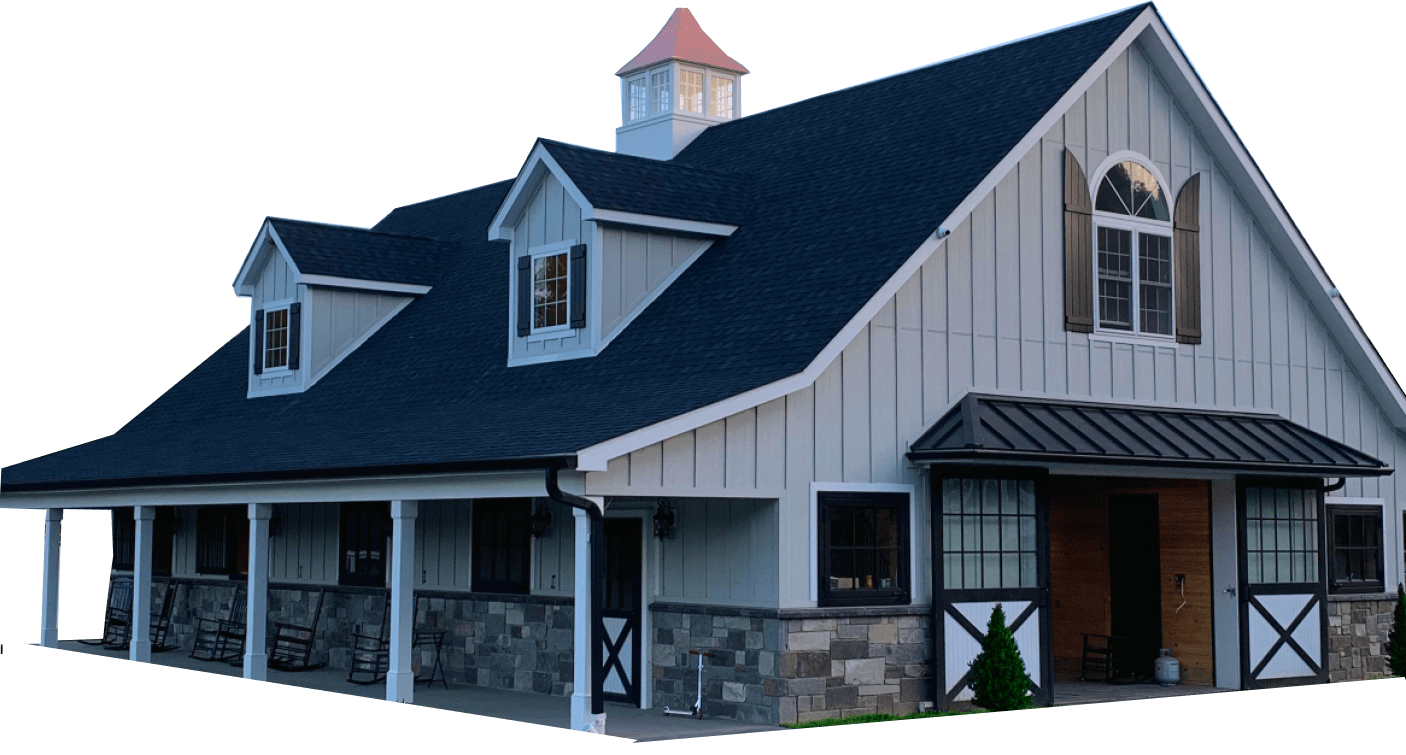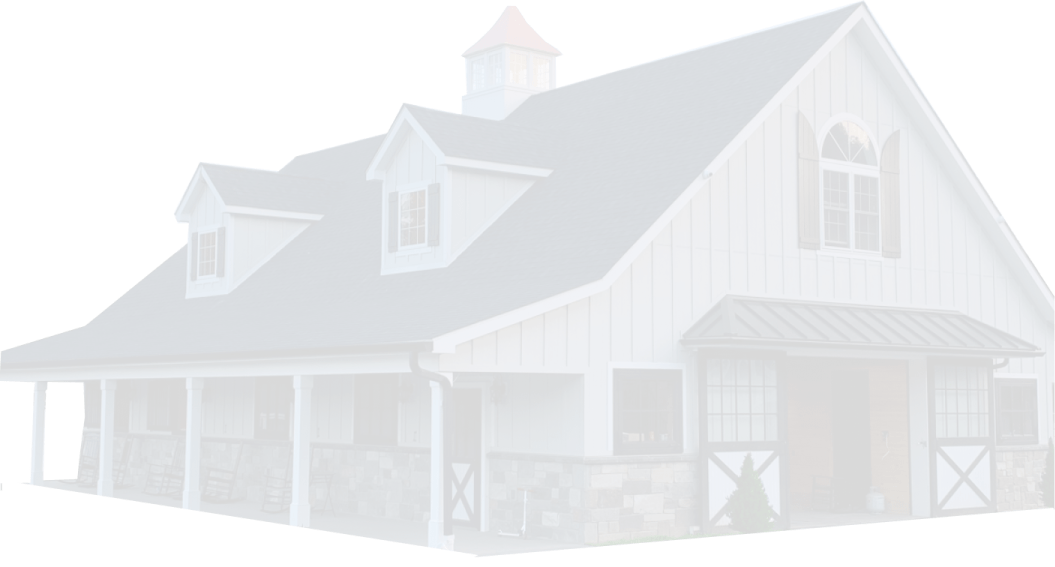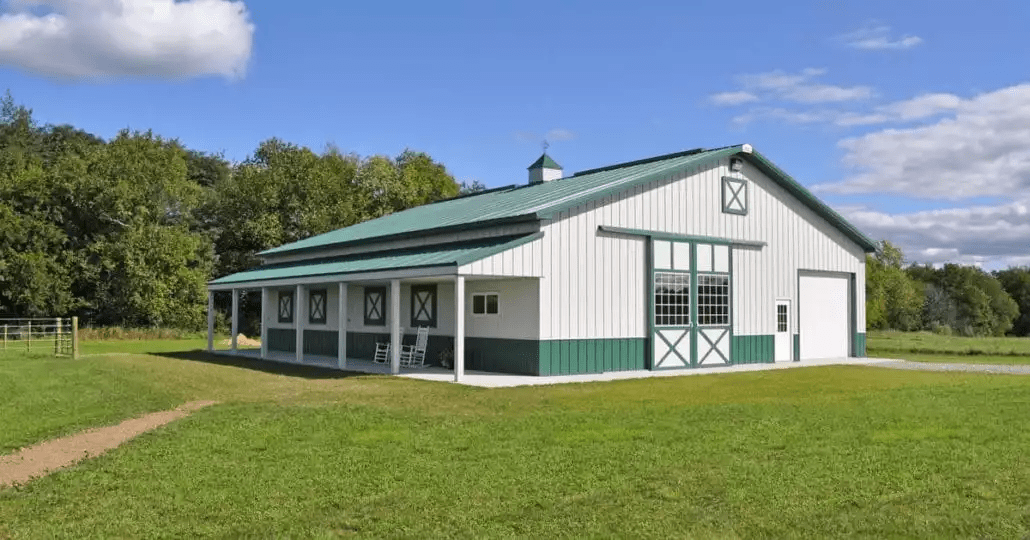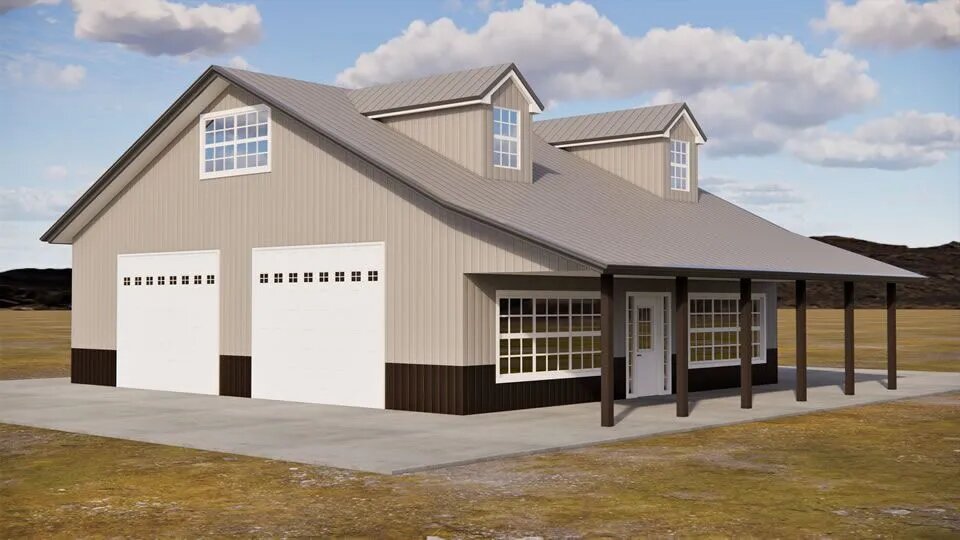

The better approach to construction
that is Simply Better
Foster Roofing & Construction
Pole Barn Construction
What is a Pole Barn?
You Might Say It's A Simple Approach To Construction
The name "pole barn" comes from the 1930s. A disrupted economy due to the Great Depression and Dust Bowl forced farmers in rural communities to use recycled telephone poles as their primary building materials. The farmers back then called them "telephone pole barns." The shortened name for these buildings was "pole barn," marking the advent of modern American pole barns.
A pole barn is a type of post-frame construction. This method uses metal steel or wood poles and cross beams to build sturdy structures that are reliable and adaptable.
Pole buildings use posts as a framing member to anchor them a few feet deep into the ground. These serve as a critical feature of a barn's foundation, which is less costly and time-consuming to prepare than other types of construction.
Pole barns differ from a conventional home. A typical home of a stick frame structure is built up from the ground to create a structure that includes many different pieces, not just a few posts. The foundation of the home, made of either concrete or wood, supports the entire building and keeps it in place.

Pole Barn construction is perfect for:
- Commercial Buildings
- Residential Buildings
- Equine Buildings
- Equipment Storage Buildings
- Greenhouses
- Multi-use Structures

Difference between Pole Barn and Stick Built structures.

Construction Process - Stick building is a method in which a structure is assembled on-site from individual pieces of lumber. This allows the builders to create a unique design for each building and to correct any problems they encounter during construction.
A pole barn is made from materials pre-cut at a factory. Engineered lumber is cut to the sizes needed and delivered to the building site in a kit. This makes it easy to build a standard type of structure based on a common plan, although it can also be customized.
Some people believe that stick-built construction is superior to a pole barn, but that is not necessarily true. When properly constructed, a pole barn can be just as good as a stick-built structure and can even be better in some respects.
A Pole Barn Can Cost Less Than a Stick-Built Structure - Building a pole barn can cost significantly less than constructing a stick-built structure. The foundation usually makes up over 15 percent of the cost of constructing a single-story building. A pole barn uses posts buried in the ground to support the weight of the walls and the roof. In many cases, a traditional concrete foundation is not needed.
The truss spacing in a pole barn is typically wider than that in a stick-built structure. When properly designed and constructed, the trusses on a pole barn can be more than 8 feet apart and can support heavy snow loads. This can significantly reduce the construction costs for a large building.
A pole barn can be constructed to look like a conventional building. The walls in a pole barn are not load-bearing because the poles support the weight of the building. This reduces the cost of framing.

A Pole Barn Can Be Easier to Build - If the building is to be constructed on land that is not flat, problems may arise. To construct a building with a conventional foundation, it will probably be necessary to move soil and level the site. A pole barn can be built on a non-level site without the need for extensive site preparation.
A Pole Barn Can Handle Severe Weather - A pole barn can stand up to severe weather that could damage or destroy a conventional building. The posts that are embedded in the ground transmit lateral wind loads on the walls to the ground. Pole barns also generally do not collapse during a fire like conventional buildings on foundations can.
A Pole Barn Can Be More Energy-Efficient - A pole barn can also be more energy-efficient than a stick-built structure. A pole barn has fewer thermal breaks than a conventional building. Posts that are 8 feet or more on center can be insulated better than studs 16 or 24 inches on center in a stickframe building.
Benefits of Pole Barn Construction
They're Economical
Pole buildings require less wood or steel than more traditional types of buildings. In turn, the cost is cheaper due to fewer materials and a quicker construction process.
Very Little Groundwork
Pole barns are an ideal building option for uneven terrain, and you don't have to level before construction begins.
Easier Construction
When you hire a team of professionals like Foster Roofing & Construction, your total labor costs decrease because the construction time will be shorter.
Better Insulation
Pole barns naturally promote better ventilation so you can enjoy a more comfortable and fresh environment.
Peace of Mind
What it all boils down to is Pole Barns are Simply Better. Less expensive, more versatile and functional.

Upgrade Your Property With New Siding!
When you decide to repair or replace your siding you also add curb appeal to your home. Our knowledgeable staff will gladly assist you in choosing the perfect siding for it. We take care of everything from removing the currently installed siding to installing your brand new soffits and fascia. We are sure to do a thorough site clean-up after the job, leaving your property clean and tidy.
Warping: It is a tell tale sign that when your siding starts to look bent and begin warping, the underneath layer is rotting which means it's time for an upgrade.
Peeling Paint: If you notice that the walls inside of your home being showing signs of damage, it could mean that your siding is allowing moisture in towards the inside of your home, which means you need it replaced.
Mold or Mildew: If you begin seeing mold or mildew stains on your siding, there's a good chance you need to replace you siding.
Dry Rot: Many times, people will not be able to see that they actually have a dry rot issue. This is because a lot of the time it is hidden from view. You can test for dry rot by slightly tapping around the bottom of your siding and checking if it is still properly intact. If not, it may be time to replace.

